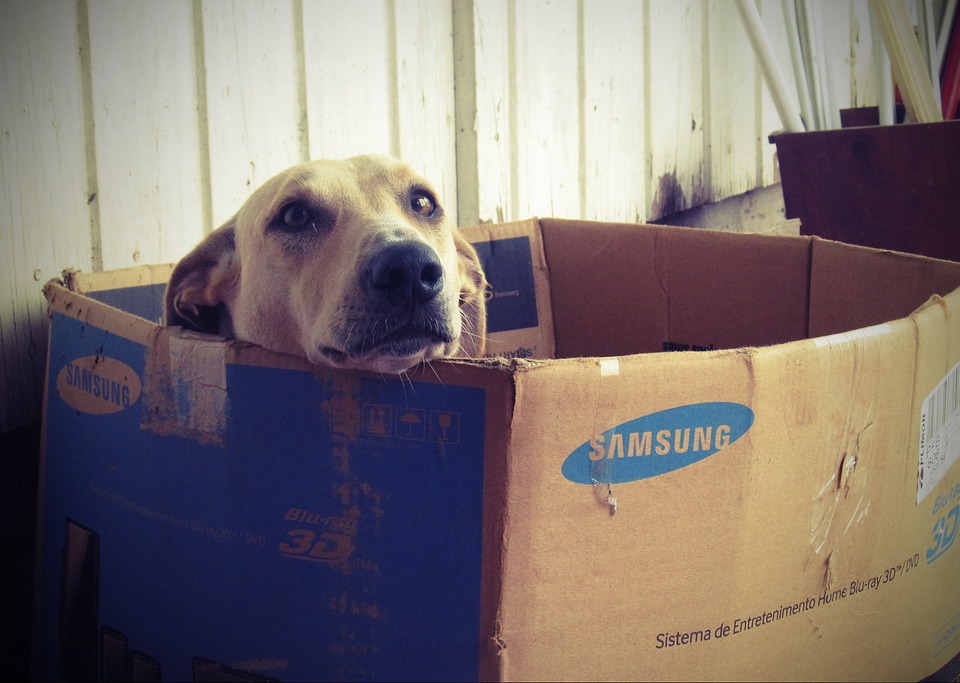Summertime doesn’t always bring good weather, as anyone who’s lived in Britain for long will tell you. Sometimes the extra heat and humidity can produce storms, which can be very distressing for some dogs.
But why do they sometimes freak out so much, and what are the best ways to keep them calm? Here’s what you need to know.
Why do dogs hate storms?
Dogs have much more sensitive hearing than us, so the primary reason is that they don’t like the loud thunder claps and rumbles. Dogs don’t get science lessons at school, so the loud noises and flashes of light are inexplicable to them.
Some dogs such as rescued and adopted pups, sadly, have had bad experiences which can contribute to them being more fearful. This can be overcome with lots of love and bonding. Training is one way to do this; your dog needs to be taught that storms are (usually) nothing to worry about and that they can trust you.
We’ve rounded up some of the best tips and good practice to help you and your pup prepare well and weather the storm.
1. Prepare a safe place
The concept of a safe place is to make a comfortable spot where your dog can get some quiet alone time, without the risk of getting stuck, or damaging furniture. If you have a room in your house away from windows and doors, that could be a good option. Encourage your dog to make use of a spot that they can retreat to and leave safely. It could be a ‘doggy den’, or their favourite box. Don’t force your dog into a space if they’re resistant; instead, work on positive encouragements.
2. Train your dog for good communication and behaviour
Good training is an important baseline for keeping your dog happy and well behaved in everyday life, and in extraordinary circumstances, too. You’ll want your dog to trust you and be obedient to specific commands. This can be fun, too! Build a strong relationship with your dog by using positive reinforcement techniques to help your dog learn in a way that keeps them happy and healthy.
3. Normalise thunderstorms
Play a recording of a storm to your dog, or keep it on quietly on in the background – here’s one you can stream from the internet. This might sound a little counter-intuitive, but if you accompany this with a fun game, and reward your dog with treats, you can help your dog to associate the sounds of a thunderstorm with good things. You can then reinforce this with games and treats when there’s a real storm.
4. Distraction techniques
If there’s a storm brewing, you might have some success by taking the initiative and distracting your dog with a toy or by playing a game. Here are some toys you can make yourself.
5. Keep the whole family calm
Try to behave as normally as possible, even us ‘big kids’ can get a bit over-excited when there’s a storm happening. But normal behaviour will help tell your dog there’s nothing to worry about. This includes not scolding or fussing over your dog or adopting punishment techniques if they to misbehave. If you have kids you may want to think about prepping them too. Why not ask your children to try to contain their excitement? You could explain they can help keep their dearest doggy calm. If they’re very young or easily frightened, then keeping the dog and children in different rooms might help.
6. Wrap your dog in a towel or scarf
You can buy specialised products that are designed to exert a small but firm amount of pressure on a pup’s body, to help keep them relaxed. A DIY version of one of these products can be just as effective. Rather than over-coddle your pup, as they’ll learn and repeat this behaviour, snuggly wrap your dog in a small towel or a scarf – something you can easily secure and keep tight, whilst allowing your dog to move freely around the house.
7. Contact your vet
If all the above tips still leave your dog incredibly anxious and distressed, your vet may be able to offer sedatives and further advice. Ideally, you’ll aim to get your dog to a position where they can keep calm, happy and well behaved through training and good habits, rather than relying on sedatives.
How does your dog behave during a thunderstorm and what remedies and training techniques have you found helpful? Share your tips in the comments or pop us a note on Facebook or Twitter.







